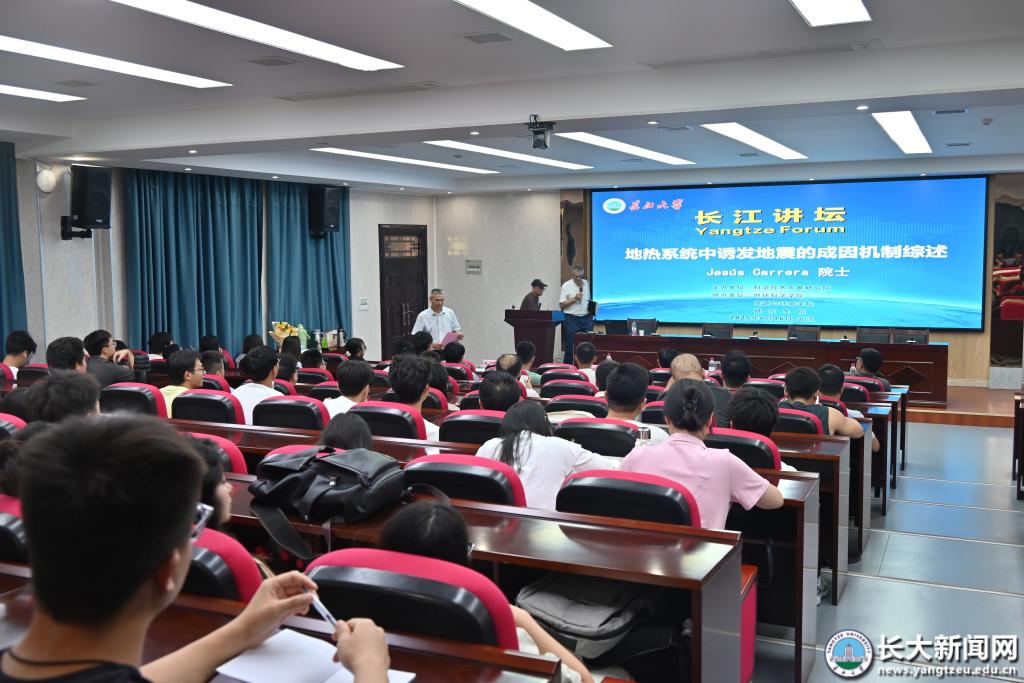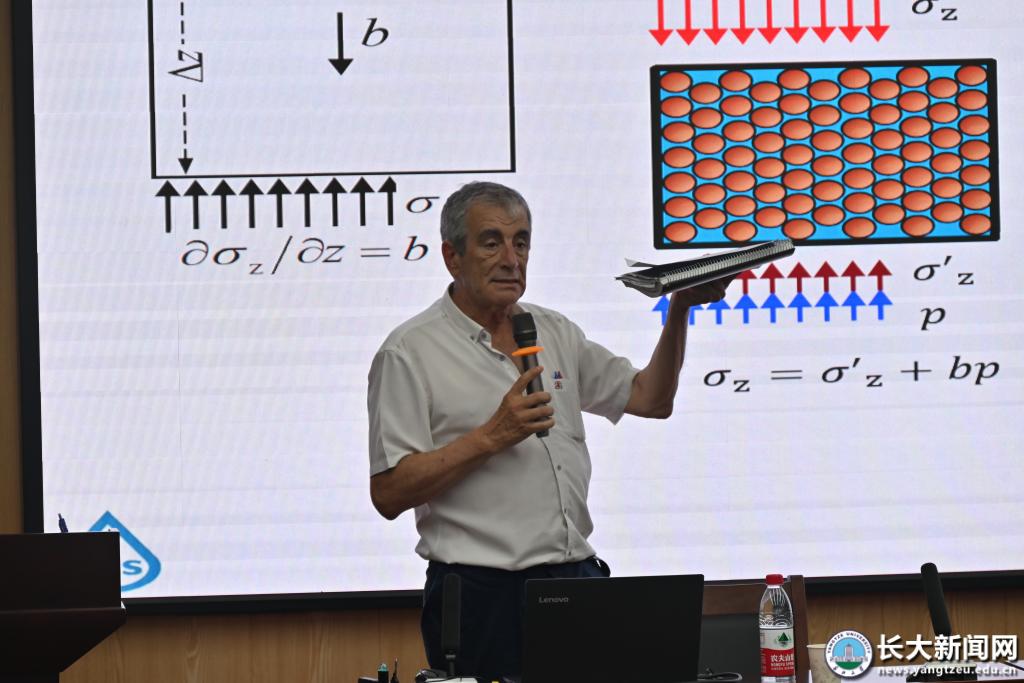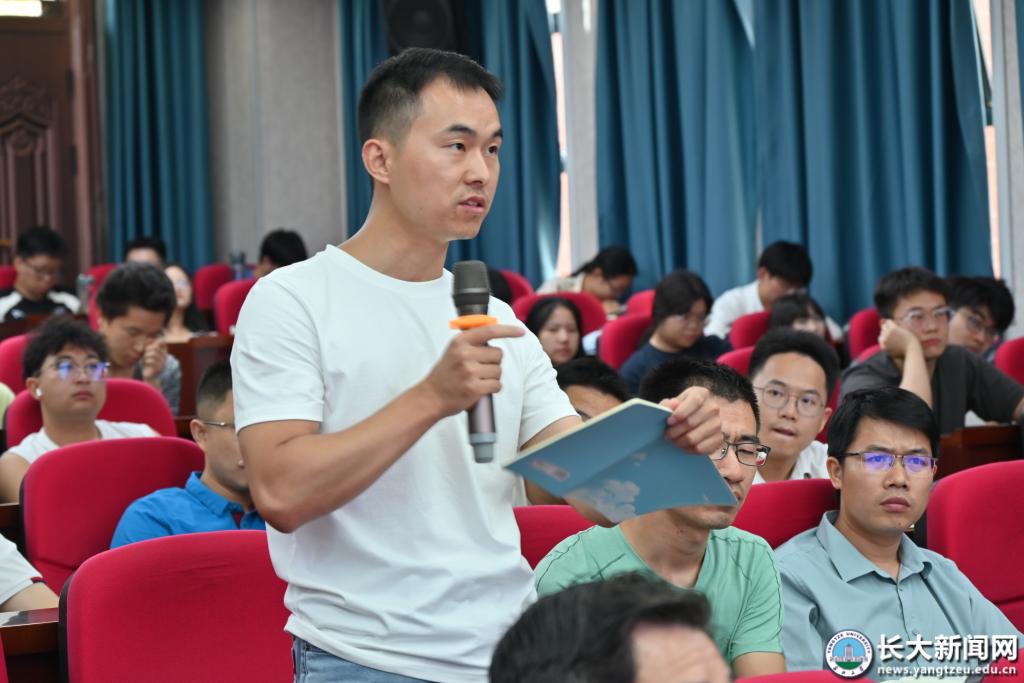On the afternoon of June 16, Academician Jesús Carrera, Foreign Member of the US National Academy of Engineering and Member of the European Academy of Sciences, was invited to attend the 77thsession of the“Yangtze Forum”. He delivered a wonderful academic report titled“A Review of the Genetic Mechanisms of Induced Seismicity in Geothermal Systems”to the teachers and students of the university in Lecture Hall B110 of the teaching building on the Wuhan campus.

Vice president Jiang Houshun, together with more than 130 teachers and students from the School of Earth Sciences and the School of Resources and Environment, attended the report. Professor Chen Ningsheng from the School of Earth Sciences hosted the report.
At the beginning of the report, Academician Jesús Carrera gave a vivid demonstration with his portable notebook, vividly explaining the phenomena and principles of externally induced seismicity. This thus introduced the report’s theme and ignited the learning enthusiasm of teachers and students present. As an important clean and renewable energy source, traditional geothermal energy development method ( extracting underground hot water and re-injecting cold water) often induced seismicity, especially in the initial stage of development. He took the United States as an example to illustrate that from 1973 to 2015, the number of induced seismic events of magnitude 3 or above increased to about 2,500. After the suspension of cold water injection, the situation of induced seismicity was significantly improved. He pointed out that this phenomenon was prevalent worldwide.

To conduct an in-depth analysis of the mechanism of geothermally induced seismicity, Academician Jesús Carrera started with the equilibrium equations of hydro-mechanical coupled models, the principle of effective stress, and failure criteria, elaborating in detail on the impact of increased pore water pressure on rock mass stability. Subsequently, combining stress changes caused by pressure gradients or thermal contraction, he systematically established the hydro-thermal-mechanical(HTM) coupled model for induced seismicity and its operating mechanism. Finally, he summarized the instability mechanism of thermal fluid-induced seismicity into five key factors: pressure accumulation, pressure diffusion, displacement transfer, thermal contraction, and buoyancy effect.
“Only by truly grasping these induced mechanisms can we move break through the limitations of traditional‘traffic light-style’seismic monitoring system and make progress toward more effective control of induced seismicity,”Academician Jesús Carrera concluded his report with this insightful outlook. He also encouraged young scholars to seek the root causes and persist unremittingly on their scientific research journey.

During the Q&A session, teachers and students actively raised questions on topics including seismic geological modeling, reservoir-induced seismicity, and the correlation between shale gas extraction and earthquakes. Academician Jesús Carrera answered each question with patience, creating a lively atmosphere.

After the report concluded, vice president Jiang HouShun presented the“Yangtze Forum Cup”to Academician Jesús Carrera on behalf of the university, and student representatives delivered floral tributes as a token of appreciation.